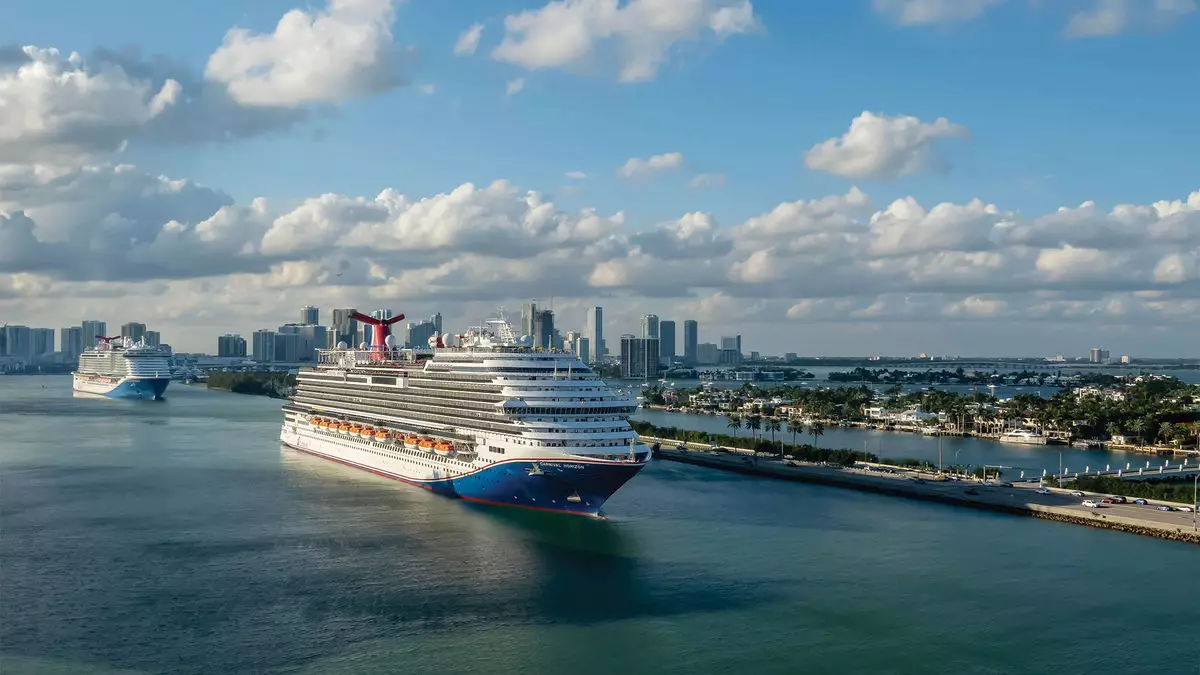In the cruise industry, the traditional format of a week-long voyage often leaves little room for additional exploration at the starting or ending destinations. As Jean-Paul Rodrigue, a maritime business administration professor at Texas A&M University-Galveston, points out, travelers usually operate within tight vacation schedules. Their main objective is to maximize their limited time off, leading them to view the local ports merely as supplementary stops rather than integral parts of their travel itinerary. The overwhelming majority of Americans prefer well-structured vacations; when their cruise concludes, so does their holiday. Understanding this pattern is crucial for destinations hoping to capitalize on the influx of cruise passengers.
To shift this long-standing mindset, Brett Laiken, the Chief Marketing Officer of Visit Florida, advocates a transformative approach toward cruising. His vision is clear—before stepping onboard, tourists should consider their time in Florida as a distinct part of the cruise experience. The aim is to reshape perceptions so that cruisers recognize their trip as a cohesive whole, allowing pre- and post-cruise activities to seamlessly integrate into their travel plans. This holistic view not only enriches the traveler’s experience but also highlights the local offerings, making them central rather than peripheral.
Visit Florida’s recent launch of a focused campaign illustrates the proactive steps taken to encourage this new thinking. Strategies included targeted outreach to travel advisors, providing them with essential tools such as webinars and training modules designed to inform about the benefits of blending land excursions with cruises. Through these efforts, Visit Florida seeks to articulate that exciting adventures within the state do not detract from the cruise but enhance the entire travel experience.
Travel advisors have emerged as powerful allies in this initiative, acting as the bridge between cruise lines and passengers. Their unique position enables them to guide potential travelers by presenting a unified travel package that encompasses land and sea. Laiken emphasizes the value of having advisors shape itineraries that emphasize both the cruise and the local experiences available before or after the voyage. The success of this model is evident; advisors involved in the Visit Florida initiative reported over $14 million in additional pre- and post-cruise bookings, demonstrating a tangible benefit of this collaborative approach.
New Orleans & Co. offers another interesting case study in how destination management organizations (DMOs) can effectively engage travel advisors. By providing perks and streamlined processes, New Orleans has made it easier for advisors to recommend extended stays to their clients. For instance, exclusive discounts on local tours and attractions, accessible only to travel advisors, create an incentive that both builds client loyalty and encourages a deeper relationship between the DMOs and these advisors.
This trend is not isolated to Florida or New Orleans; numerous destinations are starting to realize the potential of appealing to cruising clients through innovative offers. For example, packages that include substantial hotel discounts or unique deals such as “stay and park” arrangements resonate well with cruisers, providing them added value for their pre- or post-cruise accommodations. This strategy not only attracts cruisers looking for budget-friendly options but also helps bolster the local economy by encouraging longer stays.
Similarly, destinations like Visit Lauderdale are forming productive alliances with local travel agencies to curate tailored experiences. These agencies, like Cruise Planners, are uniquely attuned to traveler preferences and can effectively convey new attractions or opportunities to their client base. Such collaborations highlight the importance of ongoing education about local offerings, ensuring that advisors can confidently promote activities that resonate with cruise passengers.
As the cruise industry continues to face various challenges, innovative strategies that prioritize the traveler’s overall experience are essential. By harnessing the capabilities of travel advisors and fostering collaboration between DMOs and local enterprises, there is a significant opportunity to reshape the cruising landscape. The future of cruise tourism may increasingly depend on how well destinations can convince travelers that their journey begins long before they board a ship and continues even after disembarking. Ultimately, embracing this comprehensive travel model has the potential to create richer experiences for all involved—passengers, travel advisors, and local communities alike.


Leave a Reply